Winter is often a time to stay warm inside and follow up on digital files or pursue my passion for indoor studio flower and macro photography. I usually search the local groceries or flower shops for suitable photographic objects and look for all kinds of flowers, because each one has unique characteristics.
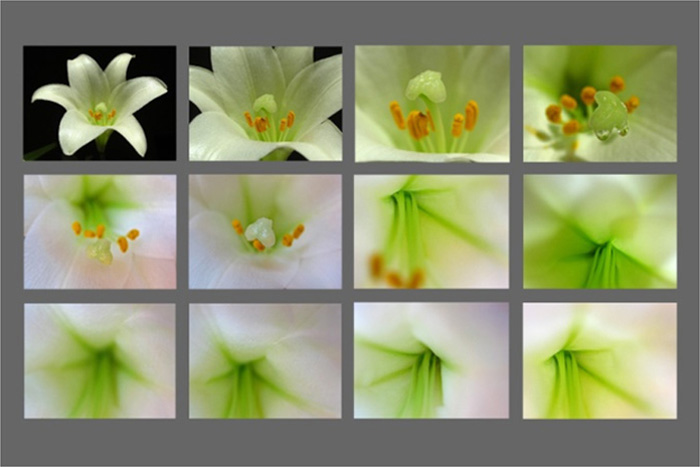
I regularly explore orchids, sunflowers, lilies, daisies, and roses with my macro lens in the pursuit of highlighting their best qualities. Last winter I brought home a pot of Easter Lilies. I was fascinated by the simple white color of the blossom with its intriguing deep throat.
My photographic vision for the lily had immediately conjured thoughts of creating abstract macro art and it stood up to its promise of inspiring beautiful sensual images.
First and foremost, I am attracted by the color of my photographic subjects. I try to build on the automatic emotional associations most people have for certain colors and use them to my photographic advantage. For example, one connects the color red with energy, danger, strength, and power, but also with passion, desire, and love–as often conveyed through red roses.
Yellow is the color of sunshine and is linked with joy, happiness, intellect, and energy. Sunflowers are the perfect expression of those attributes. Orange combines the energy of red and the happiness of yellow. On the opposite and complementary sides of the warm colors are the cool colors like blue and green.
Blue is the color of the sea and sky; hence, it is associated strongly with tranquility and calmness. Green is the color of nature. I like to think of green as harmony, freshness, and fertility. White suggests innocence, purity, and virginity and is considered to be the color of perfection. Black is mysterious, associated with the unknown and adds elegance to most photographs.
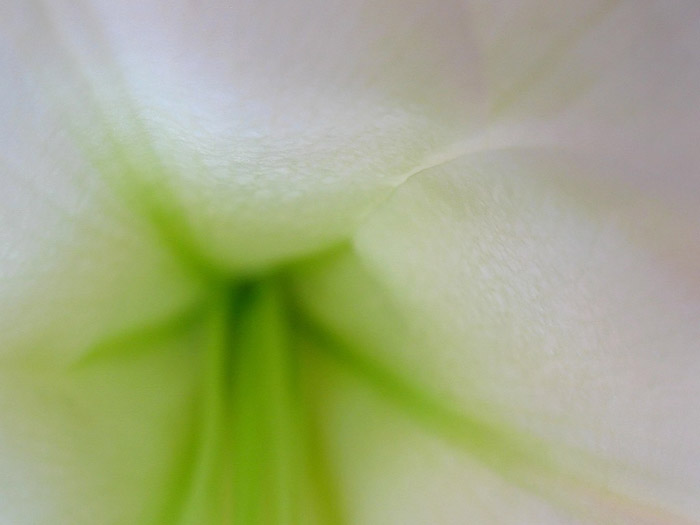
To intensify the colors in my abstract floral photography, I prefer natural lighting from behind or the side, so I often set up in front of my dining room window. I like to use a reflector or a simple white cardboard to direct the natural incoming window light to overcome and brighten the limited light inside of a flower. Both lighting techniques produce beautiful, glowing, almost neon effects.
As in landscape photography, I often use the rule of thirds as a starting point for my composition. From there, I move my camera and lens back and forth, right and left, exploring all angles to arrive at my final composition.
The process is almost an instinctive process for me as I focus on capturing something I find pretty and appealing. The subject is generally in the driver’s seat, guiding me from one composition to the next. The more deeply I penetrate downward into the center of a flower, the more abstract and beautiful it becomes.
Case Study: Lilies
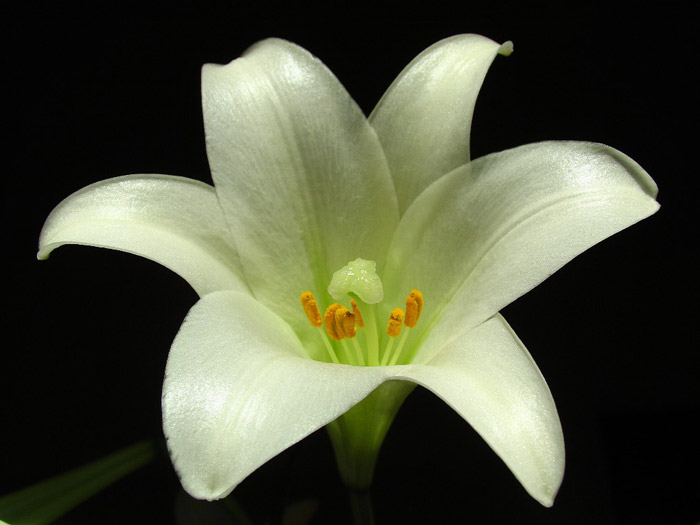
Blooming Flower Photography
Camera setting: f/5.6, 1/200 sec.
For this study, I’ve chosen white and green as my dominating colors. The series of lily photographs shown here demonstrate my step-by-step approach to flower photography and floral abstracts. Usually I start out with a straightforward flower portrait in which I prefer a black or white background to keep the effect simple and elegant. I try to highlight the flower’s beauty, colors, and character.
I circle around the flower in my quest for striking compositions and to portray the floral in its best light, unleashing its full splendor. When exploring different perspectives and angles in my floral portrait compositions, I like to work with small apertures that allow for sufficient depth-of-field.
From the distant, less intimate view I slowly begin to zoom in on the flower, exploring the subject through my viewfinder. I like to compose tighter frames around floral parts such as the filament, anther, stigma, and ovary while utilizing petals to frame the photograph.
This is the time when I switch from a small aperture (providing maximum depth-of-field) to a wider lens aperture (for softer captures with less overall detail).
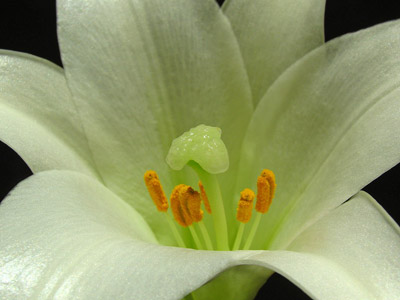
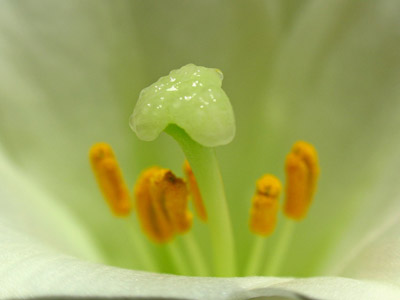
Ideally, a limited depth of field nicely isolates parts of the flower from their background. A classic floral abstract photograph can be achieved by laying the focus point on the edge or tip of a petal. However, as shown in the next few photographs, I focused directly on the stamen and stigma, adjusting the lens aperture to experiment with depth-of-field and its immediate impact on my composition.
Each of the floral parts is worthwhile exploring and makes beautiful abstract flower photography. In addition to isolating the main subject in your image, a shallow depth-of-field also provides softness that keeps harsh lines from leading the viewer out of the image.
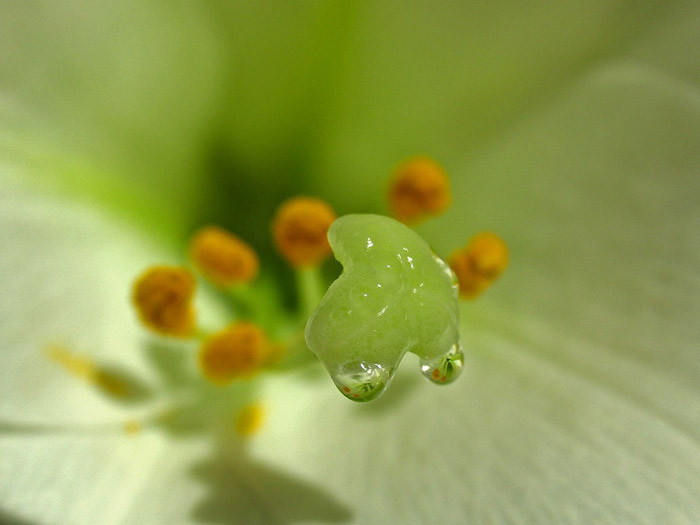
It is always a good idea to check on your photo subject a day or two later. During my case study of the Easter Lily, I was rewarded with two sweat drops on the stigma. The drops added sensuality and a new dimension to the composition.
Once I commit to a final composition, I review my camera settings and composition one more time before releasing the shutter. Using the automatic timer of the camera or a shutter release cable along with your tripod (a must) will minimize camera shake and optimize image quality.
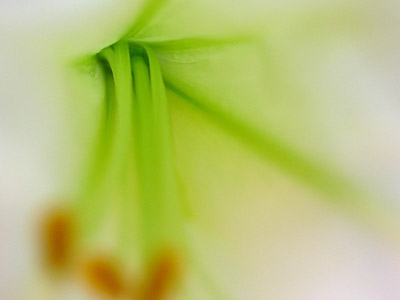
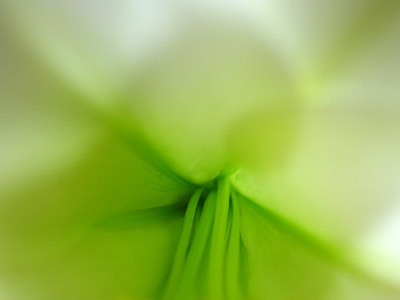
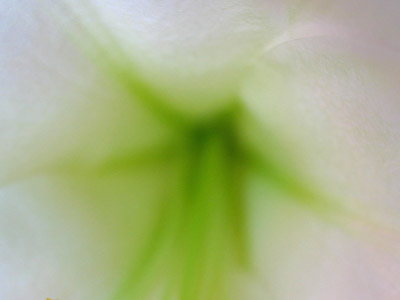
Once I exhaust the obvious in my floral photo object, I take my examination a step further and look for an even more intimate composition deep within the flower. To do so, I gently force my lens down the floral. The small 58 mm size of my macro lens allows me to enter unknown territory.
Natural backlighting through our windows often unleashes different patterns and colors within the flower. Deep down in the center of the flower where stamen, stigma and ovary combine, I isolate abstract forms. I take advantage of diagonal lines, forms, and various shapes of color that expose themselves while I’m moving the lens and camera up and down, side to side.
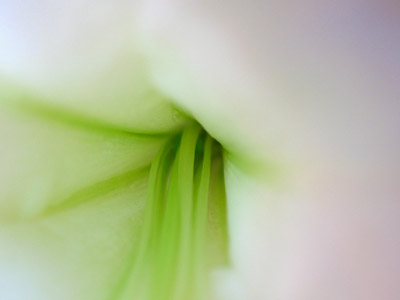
Untouched
Camera setting: f/3.5, 1/8 sec.
Explore more on the best techniques for flower photography.
by Juergen Roth
All text and photos: © 2010 Juergen Roth. All Rights Reserved.

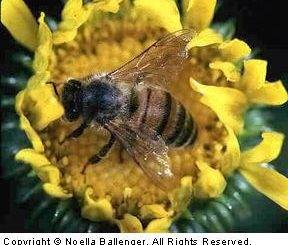
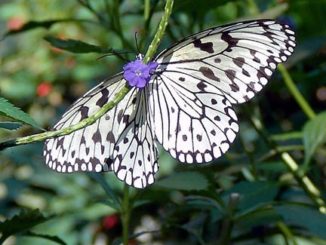
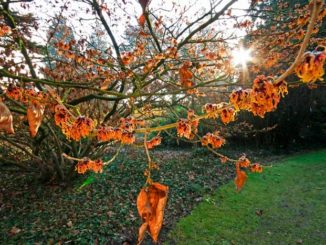
Leave a Reply